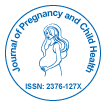开放获取期刊获得更多读者和引用
700 种期刊 和 15,000,000 名读者 每份期刊 获得 25,000 多名读者
索引于
- 哥白尼索引
- 谷歌学术
- 学术钥匙
- 参考搜索
- 哈姆达大学
- 亚利桑那州EBSCO
- OCLC-世界猫
- 普布隆斯
- 日内瓦医学教育与研究基金会
- 欧洲酒吧
- ICMJE
有用的链接
开放获取期刊
分享此页面
抽象的
A Pilot Study of the Use of Blood Markers of Alcohol Use and Brief Intervention during Pregnancy
Joan M Stoler, Peter W Forbes, Marla J Burton, Amy Rubin, Elaine M Heffernan, Martha T Kane, Jeffrey Ecker, Ronald Iverson and Lewis B Holmes
Objective: To assess the effectiveness of feedback of maternal blood markers in decreasing alcohol intake and improving neonatal outcomes.
Method: Pregnant women were screened using a validated alcohol-screening questionnaire, the TWEAK, and blood markers of alcohol use (hemoglobin-associated aldehyde, mean red blood cell volume, carbohydrate deficient transferrin and gamma glutamyl transpeptidase). There were two independently recruited cohorts: 1) a reference group without feedback of the blood marker results, and 2) a subsequent feedback group with feedback of the blood results. Self-reported alcohol use, marker results over time, infant size and gestational age of the infant of the mothers with a positive alcohol screening questionnaire and at least one positive marker (Ns=53 and 38, respectively) were compared between the two cohorts.
Results: Feedback of the blood marker results was an incentive to decrease alcohol intake in the majority of women with positive markers, as after the initial positive assay, there were fewer subsequent positive markers. More women in the feedback group had normalization of the markers compared to those in the reference group who did not have feedback (p=0.005). Furthermore the reported average daily absolute ounces of alcohol use before the feedback was 0.17 versus 0.01 ounces after feedback (p=0.004). In contrast the reported average daily absolute ounces of alcohol use in the reference cohort at the time of first blood draw was 0.042 compared to 0.031 at the time of the second blood draw (not statistically significant). There was no difference between groups in the birth size of the infants.
Conclusion: These blood markers were useful as identifiers of at-risk women and motivational and monitoring tools in the care of alcohol abusing pregnant women. The women who received this intervention reported significantly reduced alcohol use and had fewer positive markers.

 English
English  Spanish
Spanish  Russian
Russian  German
German  French
French  Japanese
Japanese  Portuguese
Portuguese  Hindi
Hindi